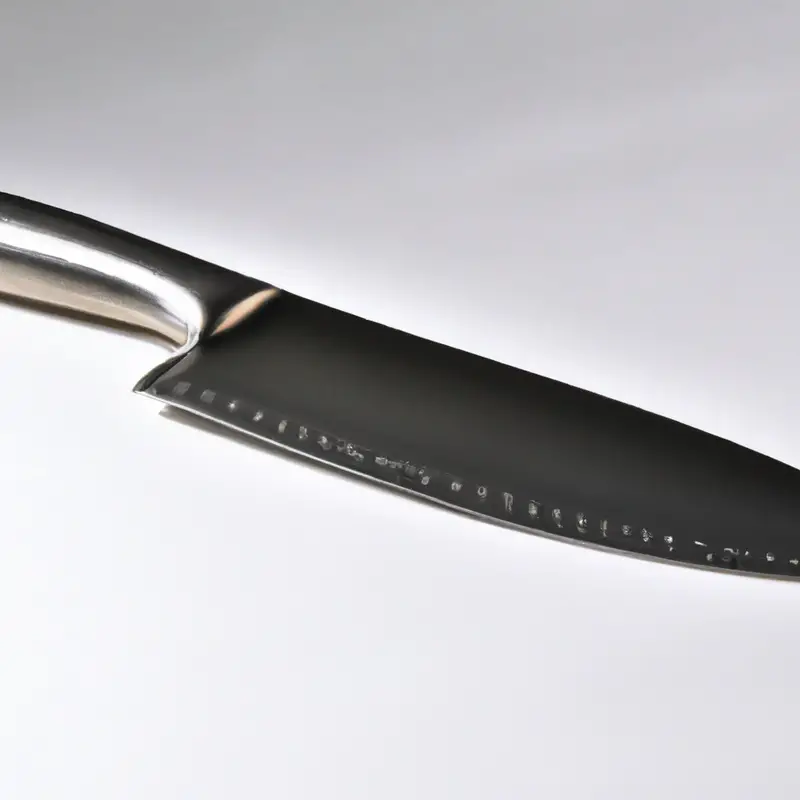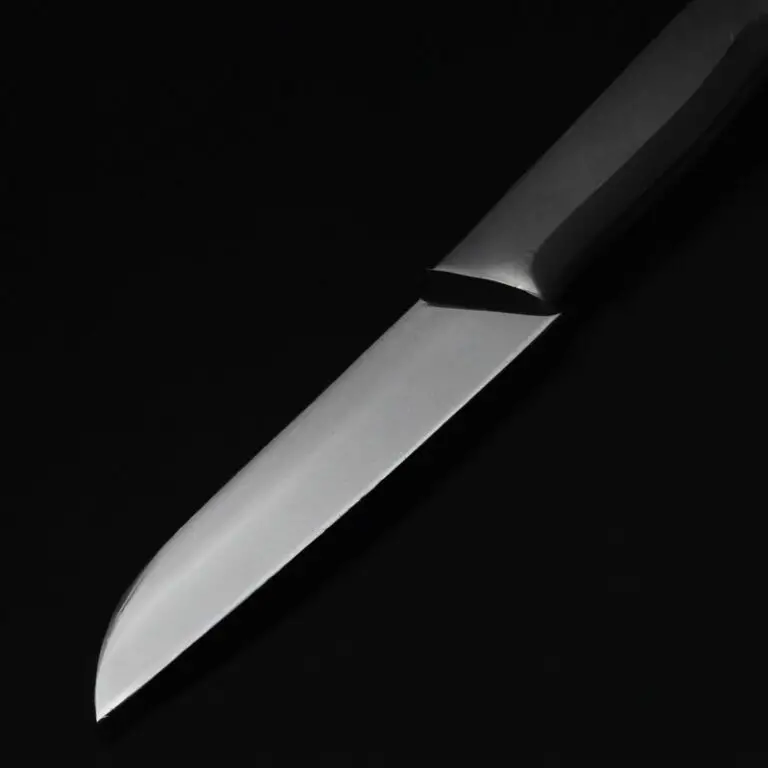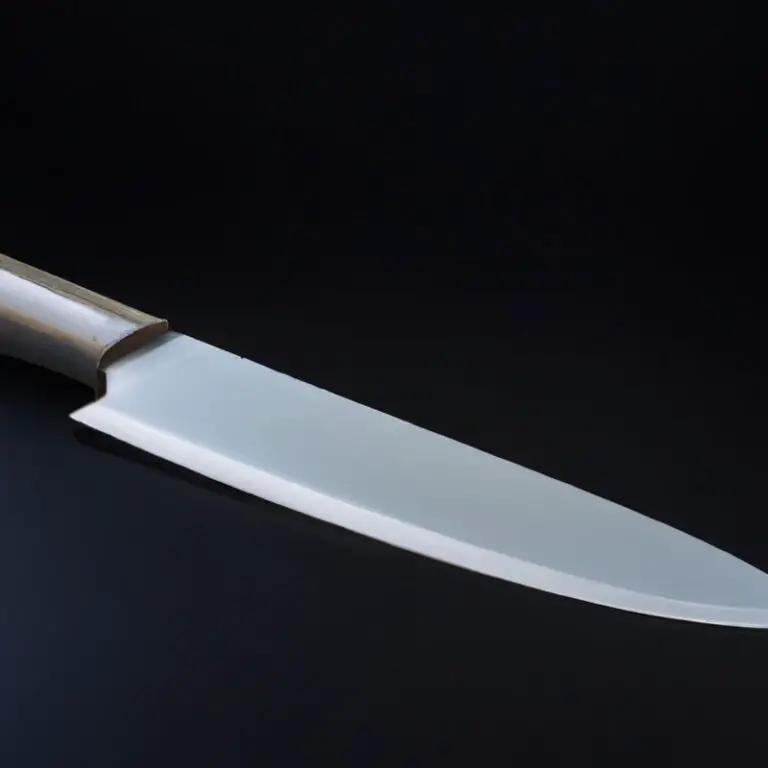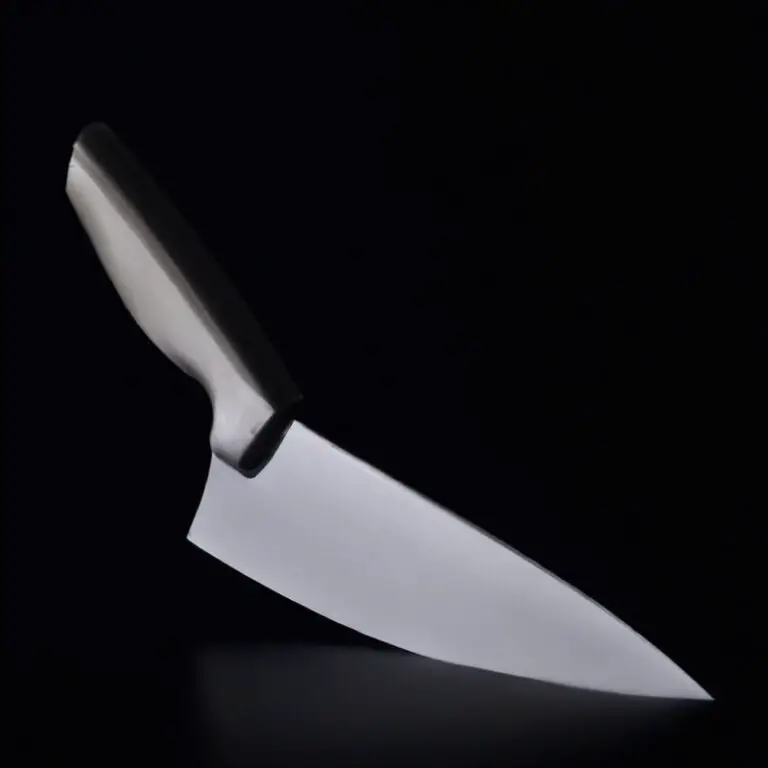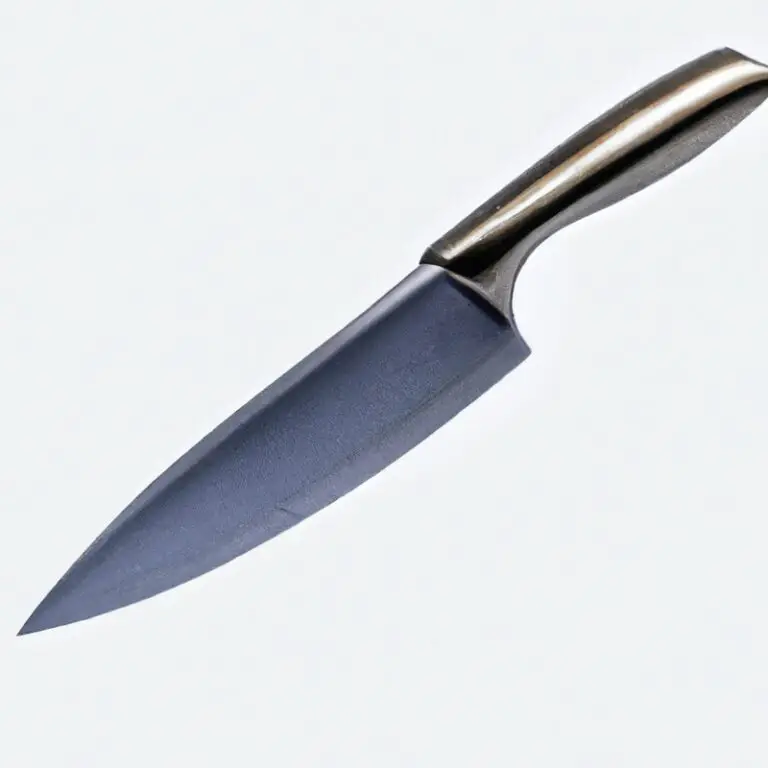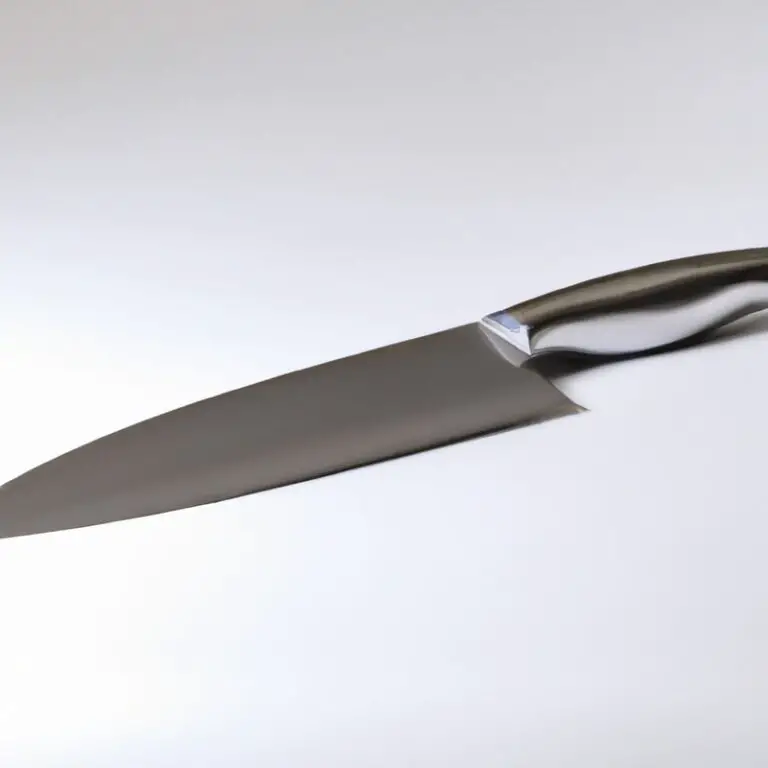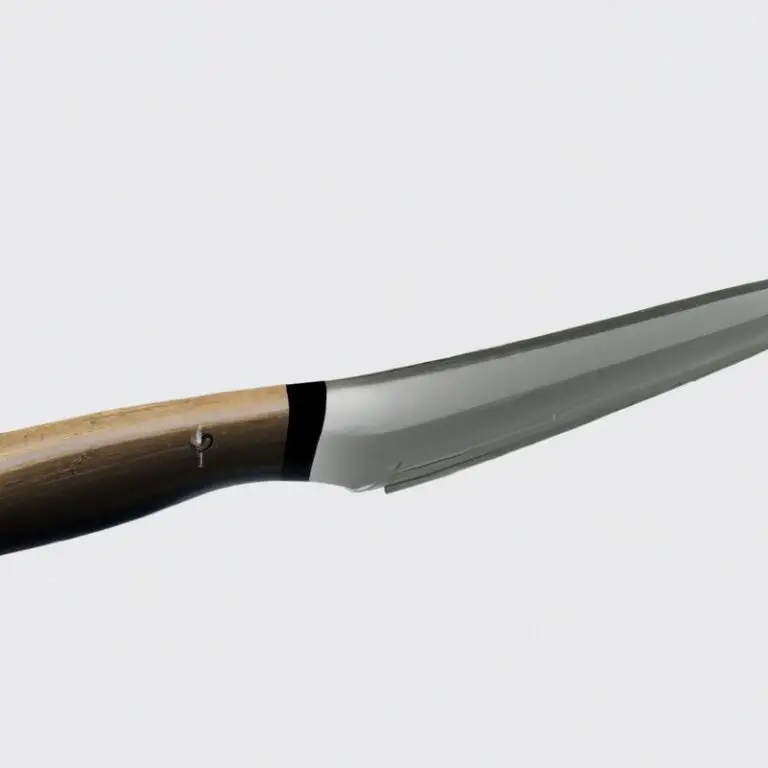Can You Use a Santoku Knife For Chopping Herbs? Try It!
Key Takeaways:
- A Santoku knife can be used to chop herbs effectively if it has a sharp blade and a comfortable handle.
- It is important to choose the right size Santoku knife for the amount of herbs being chopped.
- Using a Santoku knife can help achieve more precision in herb chopping, resulting in better texture and flavor in cooking.
- Proper care and maintenance of the Santoku knife is essential to ensure its longevity and optimal performance in herb chopping.
As a cooking enthusiast, I’m often amazed by how a good knife can make all the difference in the kitchen. The Santoku knife, a versatile Japanese knife, has gained popularity in recent years due to its distinctive shape and design.
One common question that foodies have is whether the Santoku knife is suitable for chopping herbs.
In this blog post, we’ll explore the anatomy of a Santoku knife, types of herbs that can be chopped with it, tips for using it effectively, and much more. Stay tuned for some great insights and advice!
| Knife Type | Suitable for Chopping Herbs? |
|---|---|
| Santoku Knife | Yes |
| Chef’s Knife | Yes |
| Paring Knife | Yes |
| Bread Knife | No |
| Cleaver | Yes |
Understanding the Santoku knife: A brief overview of the origins and design of this Japanese chef’s knife
The Santoku knife, also known as the “three virtues” knife, originated in Japan and has become popular among both professional chefs and home cooks for its versatility in the kitchen. Its design features a shorter and wider blade than a traditional chef’s knife, with a straight edge, a slightly angled tip, and a flat spine.
This construction allows for clean and precise slicing, dicing, and chopping of various ingredients, including herbs.
The Santoku knife’s handle is typically made of wood or a composite material, and it is designed to be comfortable and ergonomic to use. Overall, the Santoku knife’s unique design and construction make it a reliable tool for any kitchen task, including herb chopping.
The anatomy of a Santoku knife: How the blade and handle are constructed, and their implications for chopping herbs
The Santoku knife typically has a blade length between 5 to 8 inches long, consisting of a flat blade with a straight edge. Unlike the curved shape of a Chef’s knife, the Santoku blade is straighter, with a sharp tip that allows for precise cuts.
The blade is constructed using high-carbon stainless steel, which is known for its durability and resistance to rust and corrosion.
The handle of a Santoku knife is designed to provide a comfortable and secure grip while chopping herbs. It is usually made from wood, plastic, or composite materials and features a full tang design, which means the blade runs through the handle.
This design provides a well-balanced knife and helps to prevent the blade from breaking away from the handle.
The Santoku knife’s construction has implications for chopping herbs as its flat blade makes it well-suited for precise cuts and allows for push-pull chopping techniques without bruises or tears. The straight edge enhances accuracy, making it ideal for chopping delicate herbs like basil, parsley, cilantro, and more.
The handle design provides an ergonomically comfortable grip for efficient and controlled cuts, decreasing the risk of hand fatigue and increasing the precision of cuts.
Types of herbs and their chopping requirements: A guide to the various herbs commonly used in cooking and how Santoku knives can be used to chop them
Different herbs require different chopping techniques to ensure optimal texture, flavor, and aroma. Here are some common herbs and their chopping requirements:
- Basil: Best chopped by hand with a sharp knife to prevent bruising and discoloration. A Santoku knife is ideal for this task as its wide, sharp blade can quickly and easily make clean, precise cuts.
- Cilantro: Similar to basil, cilantro is best chopped by hand and requires a sharp knife to avoid mashing the leaves. A Santoku knife can make quick work of this herb, allowing you to chop it finely without crushing its delicate leaves.
- Thyme: Due to its woody stems, thyme is easiest to chop with a pair of kitchen scissors. However, a Santoku knife can also work well if you remove the leaves from the stems first and chop them finely.
- Rosemary: Tough and fibrous, rosemary requires a sharp knife to chop finely. A Santoku knife can be used to chop rosemary leaves into small pieces, making it easier to incorporate into dishes.
- Parsley: Cut parsley with a Santoku knife to avoid bruising or crushing the delicate leaves. Aim for thin, even slices to ensure a consistent texture.
By using a Santoku knife to chop these herbs, you can achieve optimal results and make quick work of your herb preparation. Remember to keep your Santoku knife sharp to ensure clean cuts and avoid damaging the delicate leaves of these herbs.
Techniques for chopping herbs with a Santoku knife: Step-by-step instructions on how to use this versatile knife to chop herbs
To chop herbs with a Santoku knife, start by holding the handle with a firm grip and placing the tip of the blade on the cutting board. Use a rocking motion to cut the herbs, moving the knife back and forth over the herbs with a slight downward pressure.
Make sure to keep the fingers of your other hand curled under to avoid accidentally chopping them.
For larger herbs, such as rosemary or thyme, use a chopping motion to break them into smaller pieces before using the rocking motion. Keep the blade sharp for best results, and avoid chopping herbs too finely, as this may damage their flavor.
With proper technique, a Santoku knife can be a versatile and efficient tool for chopping herbs in the kitchen.
Benefits of using a Santoku knife for chopping herbs: From precision and control to ergonomics and efficiency, discover the advantages of using this knife for herb preparation
The Santoku knife offers numerous benefits when it comes to chopping herbs. Its design allows for precision and control, thanks to the flat edge and sharp tip.
The blade’s non-stick properties ensure that herbs don’t stick to the surface, reducing the chances of bruising or tearing the herbs.
The wide blade also offers efficiency and minimizes the number of cuts required to chop or slice herbs. The ergonomic handle design provides comfort and reduces hand fatigue during herb preparation.
Whether you’re a professional chef or home cook, using a Santoku knife for chopping herbs is a great addition to your kitchen arsenal.
Caring for your Santoku knife: Simple tips on how to maintain your knife’s sharpness and edge, and how to clean and store it properly
Proper care and maintenance of your Santoku knife are essential to ensure its longevity and effectiveness. Here are some simple tips for maintaining the sharpness and edge of your knife:
- Sharpen your knife regularly: A sharp knife is essential for precise and safe cutting. Use a sharpening stone or honing rod to keep your knife’s edge sharp.
- Use a cutting board: To prevent unnecessary wear and tear on your knife’s blade, always use a cutting board instead of cutting directly on a hard surface like a countertop.
- Hand wash and dry your knife: Avoid putting your Santoku knife in the dishwasher as the high heat and detergent can damage the blade. Instead, wash it by hand with mild soap and warm water, then dry it thoroughly with a towel.
- Store your knife properly: It’s best to store your Santoku knife in a knife block, on a magnetic strip or in a sheath to protect the blade from damage and to prevent injury when reaching for it.
By following these simple tips, you can significantly extend the life of your Santoku knife, ensuring that it stays sharp and effective for years to come.
Alternatives to the Santoku knife: A comparison of other knives commonly used for herb chopping and their pros and cons
Apart from the Santoku knife, there are other knives in the market you can use to chop herbs. These include:
- Chef’s knife: With a long and wide blade, a chef’s knife can be used to chop larger herbs like rosemary and thyme. However, it may not be ideal for precise chopping.
- Paring knife: Ideal for small herbs like cilantro and mint, a paring knife has a short blade that allows for more precision. However, it may not be suitable for chopping larger batches of herbs.
- Mezzaluna knife: This half-moon-shaped knife is perfect for mincing herbs and has two handles for better control. However, it may take some time to get used to the rocking motion required for chopping.
- Herb scissors: Designed specifically for herb chopping, these scissors have multiple blades that make chopping easier and more efficient. However, they may not be ideal for chopping larger amounts of herbs.
When selecting an alternative knife for herb chopping, consider factors like blade sharpness, handle comfort, and ease of use. Ultimately, the best knife for herb chopping depends on personal preference and the specific herb being chopped.
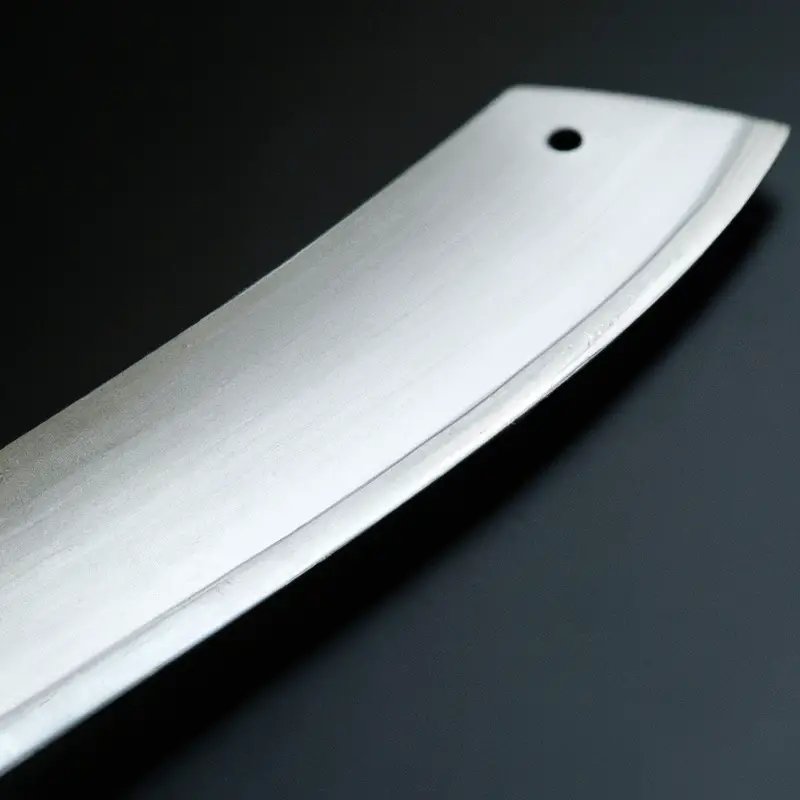
Common mistakes to avoid when chopping herbs with a Santoku knife: Tips on how to avoid damaging the blade or injuring yourself while using this knife
When using a Santoku knife to chop herbs, there are some common mistakes to avoid to prevent damaging the blade and avoid injury:
- Chopping too fast: Avoid rushing the chopping process as this can cause the herbs to fly off the cutting board and potentially cut yourself or damage the blade.
- Using the wrong part of the blade: Santoku knives have a flat cutting edge, so avoid using the tip of the blade to chop herbs as this can damage the edge.
- Using a dull blade: A dull blade can cause more harm than good, as it requires more force to cut through the herbs, increasing the risk of injury and damaging the blade. Ensure the blade is properly sharpened before use.
- Overloading the cutting board: Overloading the board with too many herbs can cause them to slide around, making it harder to chop efficiently and safely. Work in batches of manageable amount.
- Improper grip: Improper grip may cause the blade to slip out of your hand. So, ensure you have a firm grip on the Santoku knife handle.
To avoid these mistakes, use a slow, controlled chopping motion, focus on using the middle of the blade for cutting herbs, and sharpen your Santoku knife before use. Always work with manageable amount of herbs, exercise proper grip and stay aware of your fingers as you chop.
Tips for using a Santoku knife for other kitchen tasks: From slicing and dicing to mincing and crushing, explore the many applications of this versatile kitchen tool
The Santoku knife is a versatile kitchen tool that can be used for a wide range of tasks beyond chopping herbs. Here are some tips for using a Santoku knife for other kitchen tasks:
- Slicing: With its sharp and thin blade, a Santoku knife is perfect for slicing meat, fish, and vegetables into thin and even pieces.
- Dicing: The tall blade of a Santoku knife makes it ideal for dicing vegetables, such as onions, carrots, and celery, into small and uniform pieces.
- Mincing: The sharp blade of a Santoku knife can easily mince garlic, ginger, and herbs into tiny pieces.
- Crushing: The flat side of a Santoku knife’s blade can be used to crush garlic, nuts, and herbs, making it a great alternative to a mortar and pestle.
- Chopping: The wide blade of a Santoku knife can be used to chop fruits and vegetables with ease.
To make the most out of your Santoku knife, ensure that you have a good grip on the handle and use a proper cutting board. Moreover, always use a sharpened blade to achieve the best results.
Choosing the right Santoku knife for your needs: Factors to consider when selecting a Santoku knife, including blade length, material, and handle design
When choosing a Santoku knife, there are several factors to consider to ensure you get the right one for your needs. The blade length is an important consideration, with most Santoku knives coming in lengths ranging from 5 to 7 inches.
A longer blade might be suitable for larger hands or for cutting bigger items, but a shorter blade will give you more precision and control.
The material of the blade is another important factor to consider. Most modern Santoku knives are made from high-quality stainless steel, which is durable and resists rust and stains.
However, some traditional knives are made from carbon steel, which is sharper but requires more maintenance.
Handle design is also a crucial consideration. Santoku knives come in various handle designs, including Western-style handles with a full tang, Japanese-style handles with a partial tang, and hybrid styles that incorporate elements of both.
The type of handle you choose will depend on your personal preference and how you hold the knife.
Other factors to keep in mind when choosing a Santoku knife include the weight, balance, and overall feel of the knife. Take the time to research and compare different models and brands to find the one that is best suited for your needs and budget.
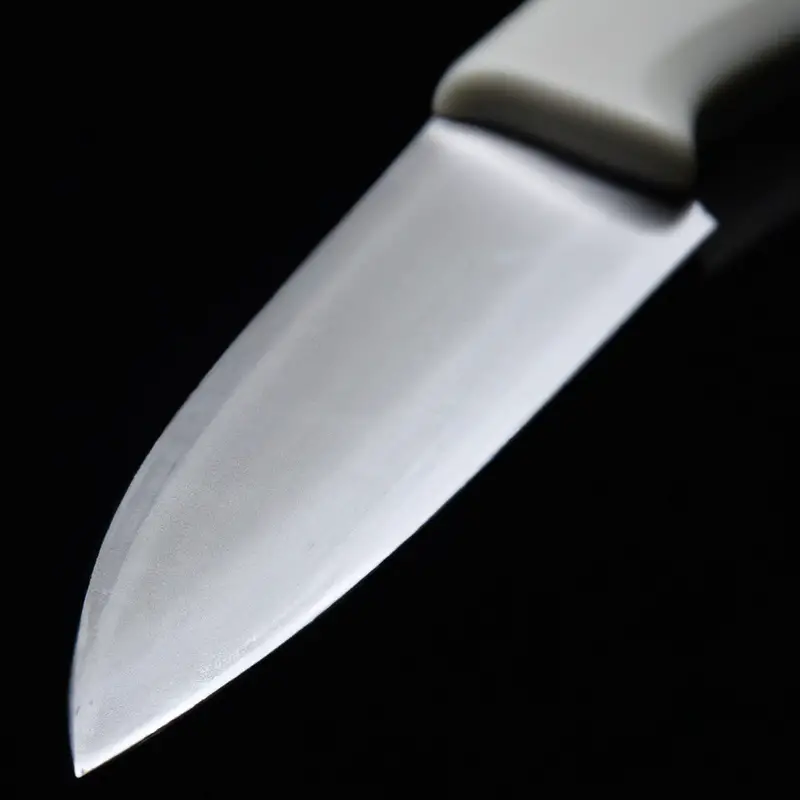
Final Verdict
The Santoku knife is an excellent tool for chopping herbs in the kitchen. Its unique design and construction offer precision, control, and versatility, making it a worthy investment for any home cook or professional chef.
By understanding the proper techniques and care for this knife, you can enhance your herb preparations and take your culinary skills to new heights.
Remember to choose the right Santoku knife for your needs, avoid common mistakes, and explore its many applications beyond herb chopping. With these tips and insights in mind, you can confidently rely on the Santoku knife as your go-to kitchen tool and elevate your cooking experience.

